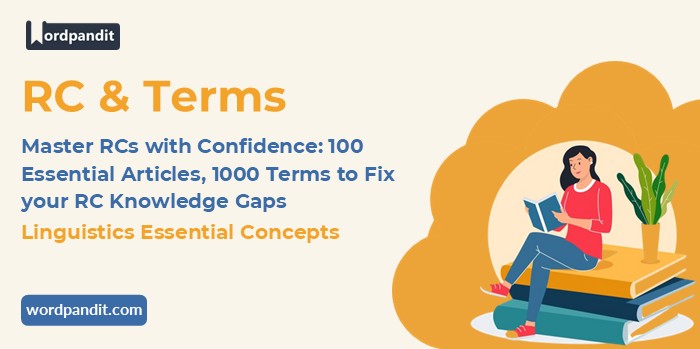🔤 Linguistics: Essential Concepts for Reading Comprehension
Linguistics, the scientific study of language, plays a pivotal role in understanding reading comprehension passages. It provides tools to analyze not only the structure and meaning of language but also the cultural and cognitive contexts underlying communication. From decoding complex sentence structures to grasping nuanced arguments, a foundational knowledge of linguistics equips test-takers to excel in analyzing critical issues and perspectives in RC passages.
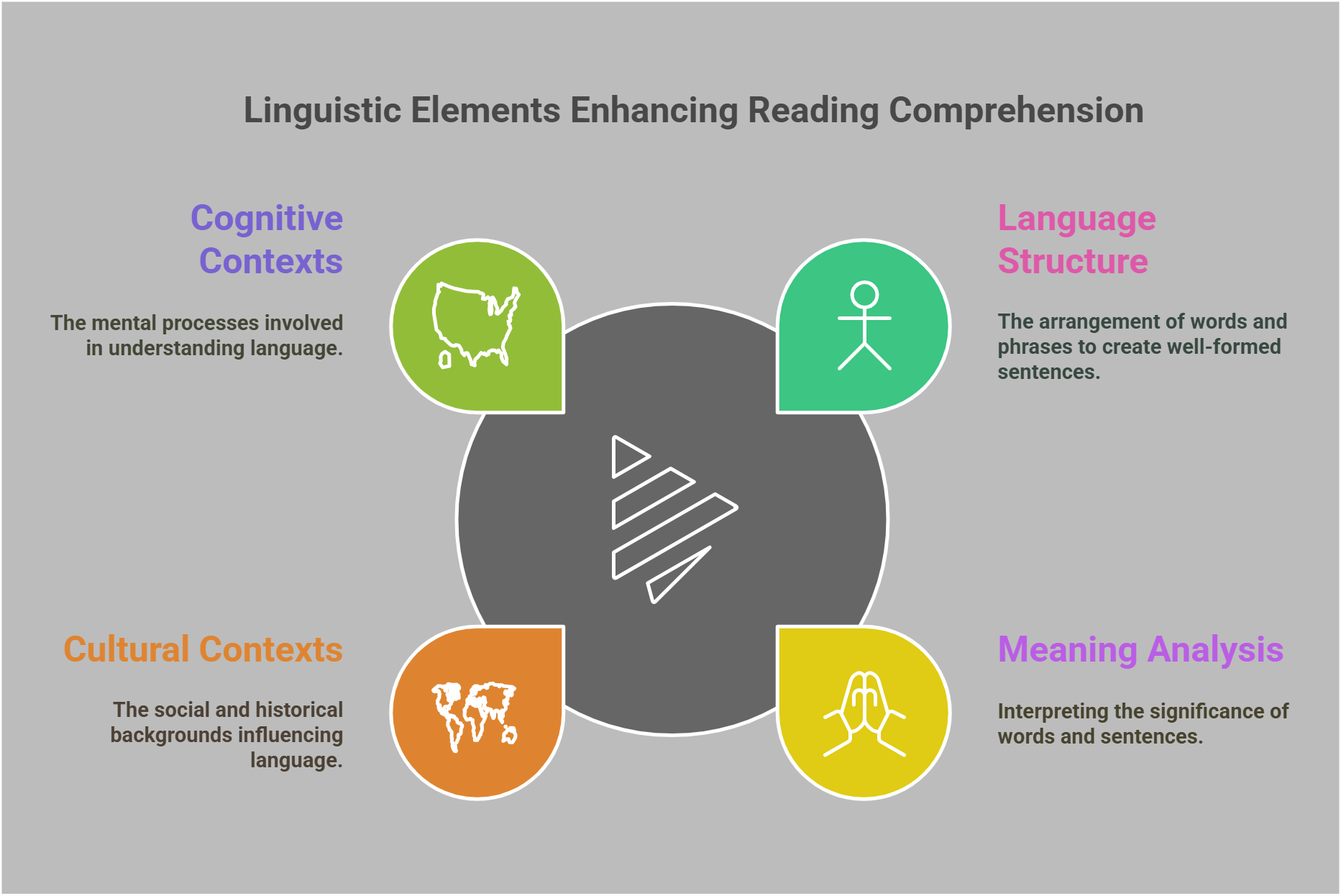
📋 Overview
In this guide, we’ll explore these key linguistics-related concepts:
- Sociolinguistics
- Language Acquisition
- Phonetics and Phonology
- Syntax and Semantics
- Language and Cognition
- Pragmatics
- Morphology
- Historical Linguistics
- Applied Linguistics
- Psycholinguistics
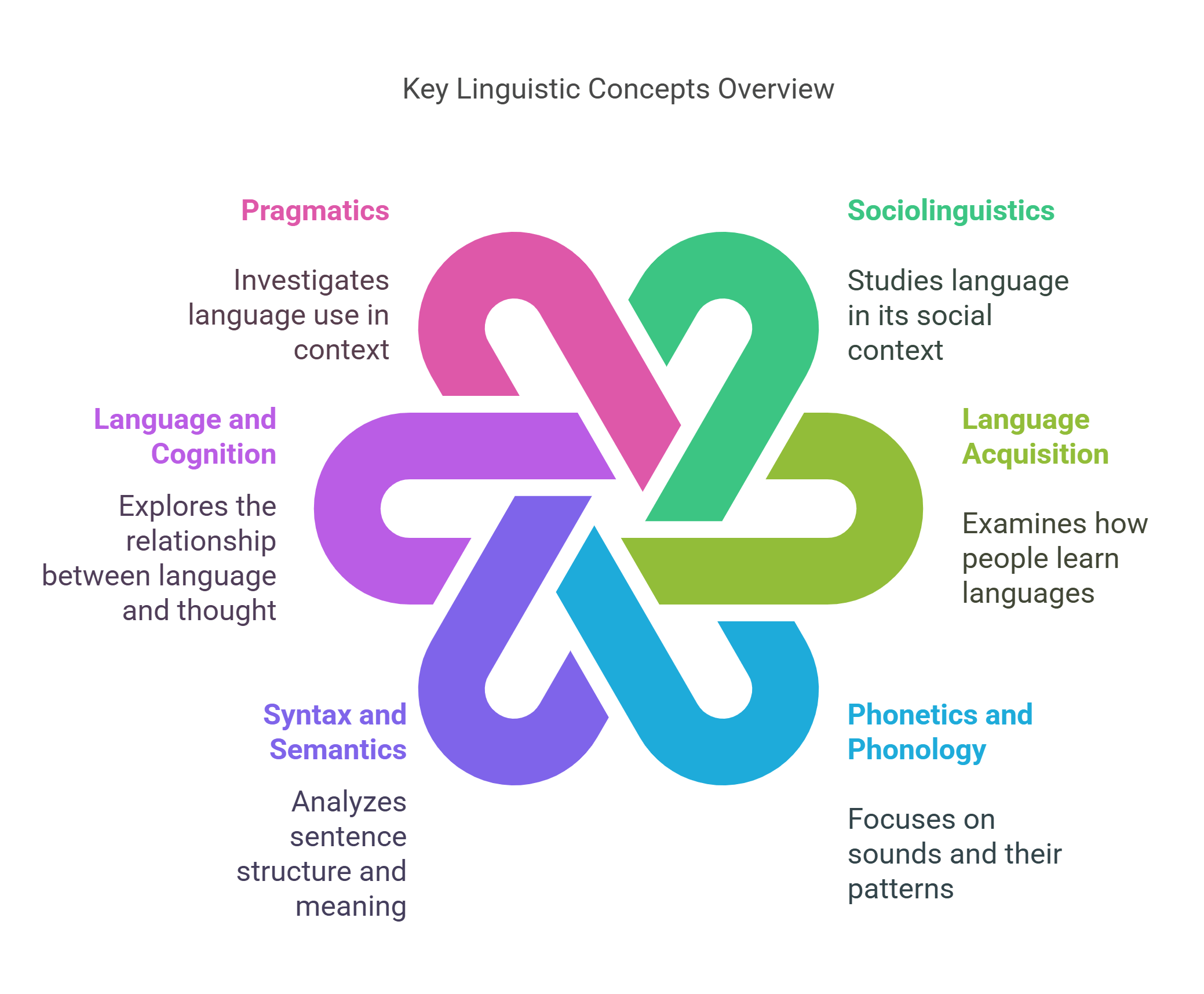
🔍 Detailed Explanations
1. Sociolinguistics
Sociolinguistics studies how language interacts with social factors like culture, class, gender, and ethnicity. It explores why people speak differently in various social contexts and how these variations affect communication. Understanding dialects, slang, and code-switching can shed light on a character’s background in a passage or the dynamics of a social situation.
- Examines the influence of society on language use.
- Explains dialects, accents, and regional variations.
- Highlights language’s role in cultural identity.
- Discusses code-switching and multilingual communication.
- Connects language to power dynamics and social hierarchies.
Explained Simply: Think about how you talk to your teacher versus your best friend. You probably use more formal words with your teacher and fun slang with your friend. Sociolinguistics is the study of why we do that—how our language changes depending on where we are and who we’re talking to.
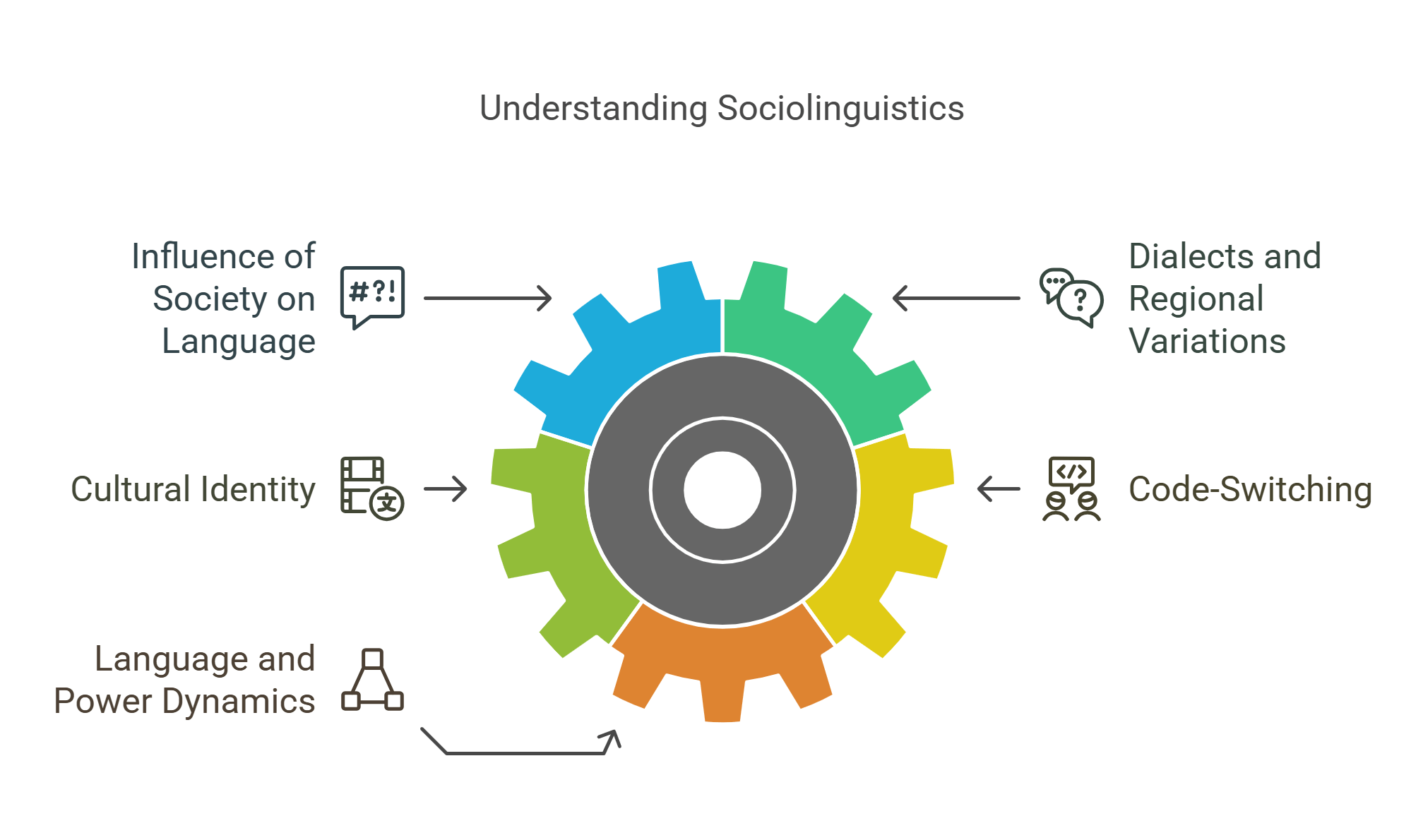
2. Language Acquisition
Language acquisition focuses on how humans learn language, both as children (first language) and later in life (second language). It examines processes like imitation, practice, and innate linguistic abilities. This concept is relevant in passages that discuss childhood development, education systems, or the challenges of learning a new language.
- Studies how people learn their first and second languages.
- Highlights stages of language development in children.
- Explores factors affecting second-language learning.
- Links language acquisition to cognitive growth.
- Includes theories like Noam Chomsky’s Universal Grammar.
Explained Simply: When you were a baby, you didn’t know any words, but you learned to talk by listening to your parents and copying them. That’s called language acquisition—like how you figured out to say “milk” when you were thirsty!
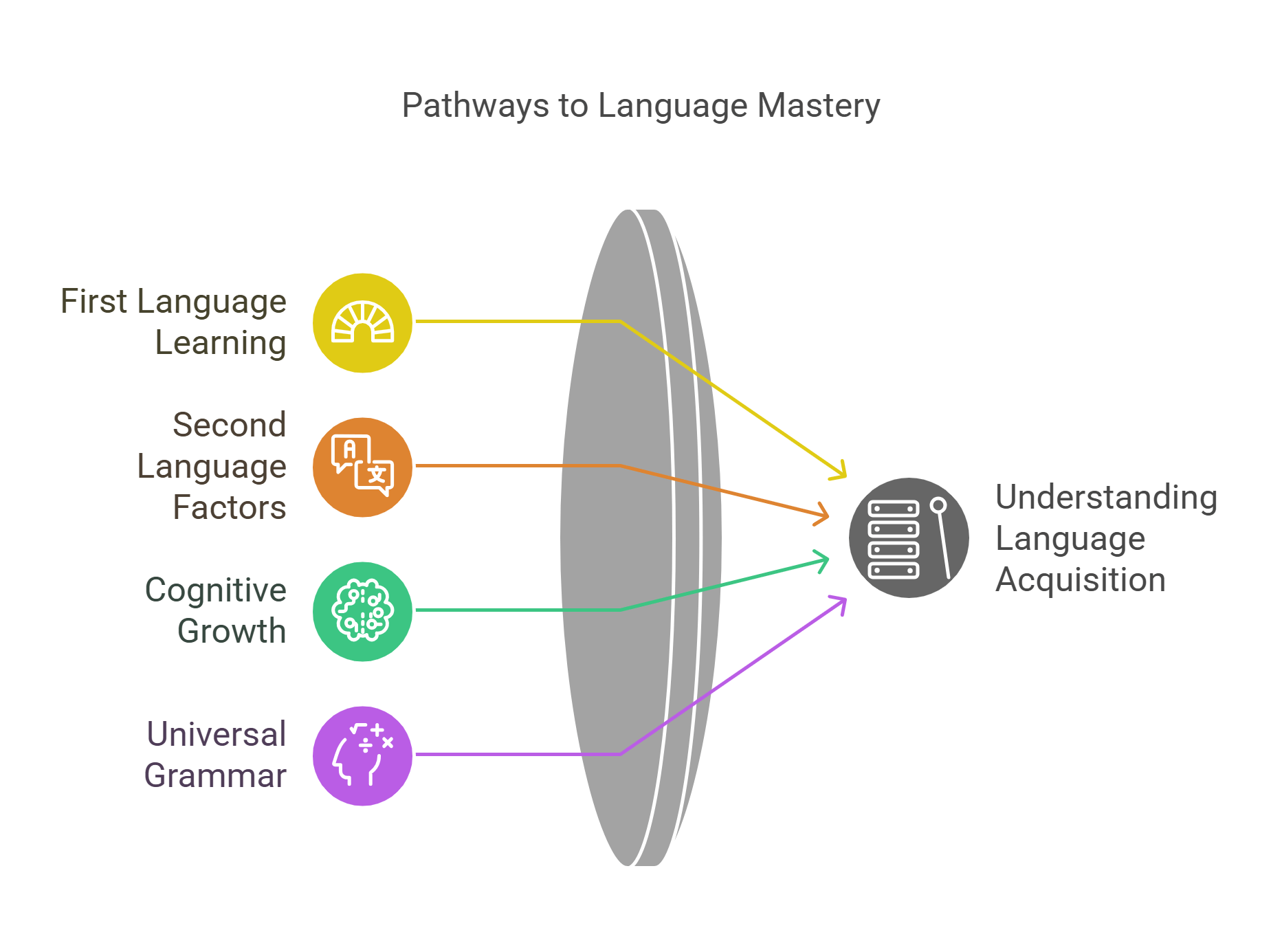
3. Phonetics and Phonology
Phonetics and phonology deal with the sounds of language. Phonetics focuses on how sounds are produced, heard, and categorized, while phonology studies how these sounds function within a language. These concepts are essential for analyzing passages that discuss accents, pronunciation, or linguistic patterns.
- Phonetics: Studies the physical production of speech sounds.
- Phonology: Explores sound patterns in languages.
- Relevant to understanding pronunciation and accents.
- Explains linguistic diversity through sound systems.
- Connects sounds to meaning and grammar.
Explained Simply: It’s like learning the alphabet of sounds—how “s” hisses like a snake or “b” pops like a bubble.
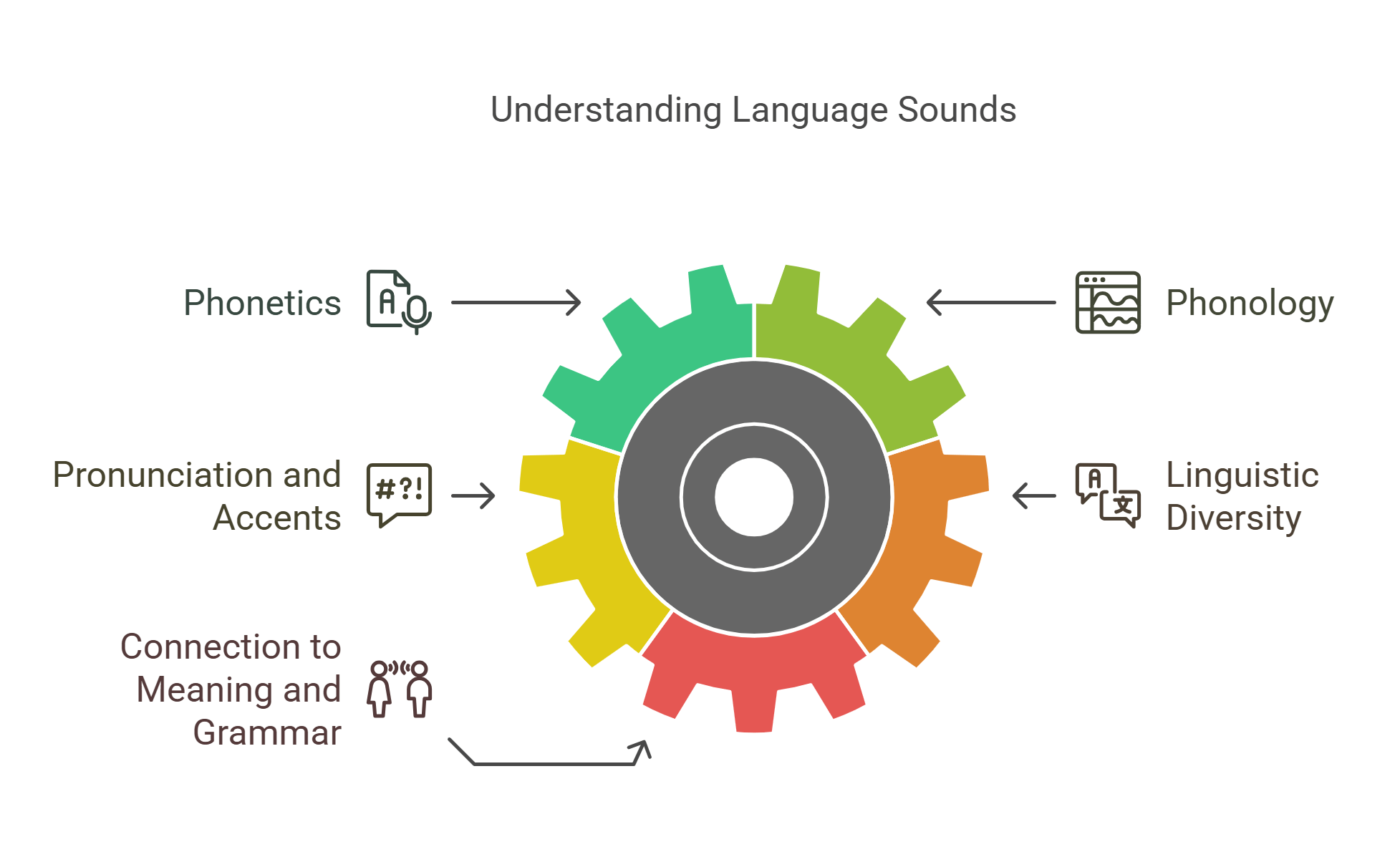
4. Syntax and Semantics
Syntax and semantics are about how sentences are structured and how meanings are derived. Syntax studies grammar and sentence formation, while semantics focuses on meaning. Passages often explore these concepts to highlight miscommunication or interpret complex texts.
- Syntax: Examines sentence structure and word order.
- Semantics: Analyzes meaning in language.
- Relevant to understanding sentence ambiguity.
- Explains how grammar conveys relationships.
- Central to analyzing logical arguments in texts.
Explained Simply: Syntax is like a puzzle—putting words in the right order to make sense. Semantics is figuring out what the puzzle means once it’s finished.

5. Language and Cognition
Language and cognition explore how language shapes thought and vice versa. It examines questions like whether the language you speak influences how you perceive the world. Passages often use this concept to discuss cultural perspectives or cognitive development.
- Studies the relationship between language and thought.
- Explores cultural influences on perception and memory.
- Relevant to debates about linguistic relativity.
- Connects language to problem-solving and creativity.
- Central to understanding cross-cultural communication.
Explained Simply: It’s like wearing different-colored glasses that change how you see the world depending on what language you’re speaking.
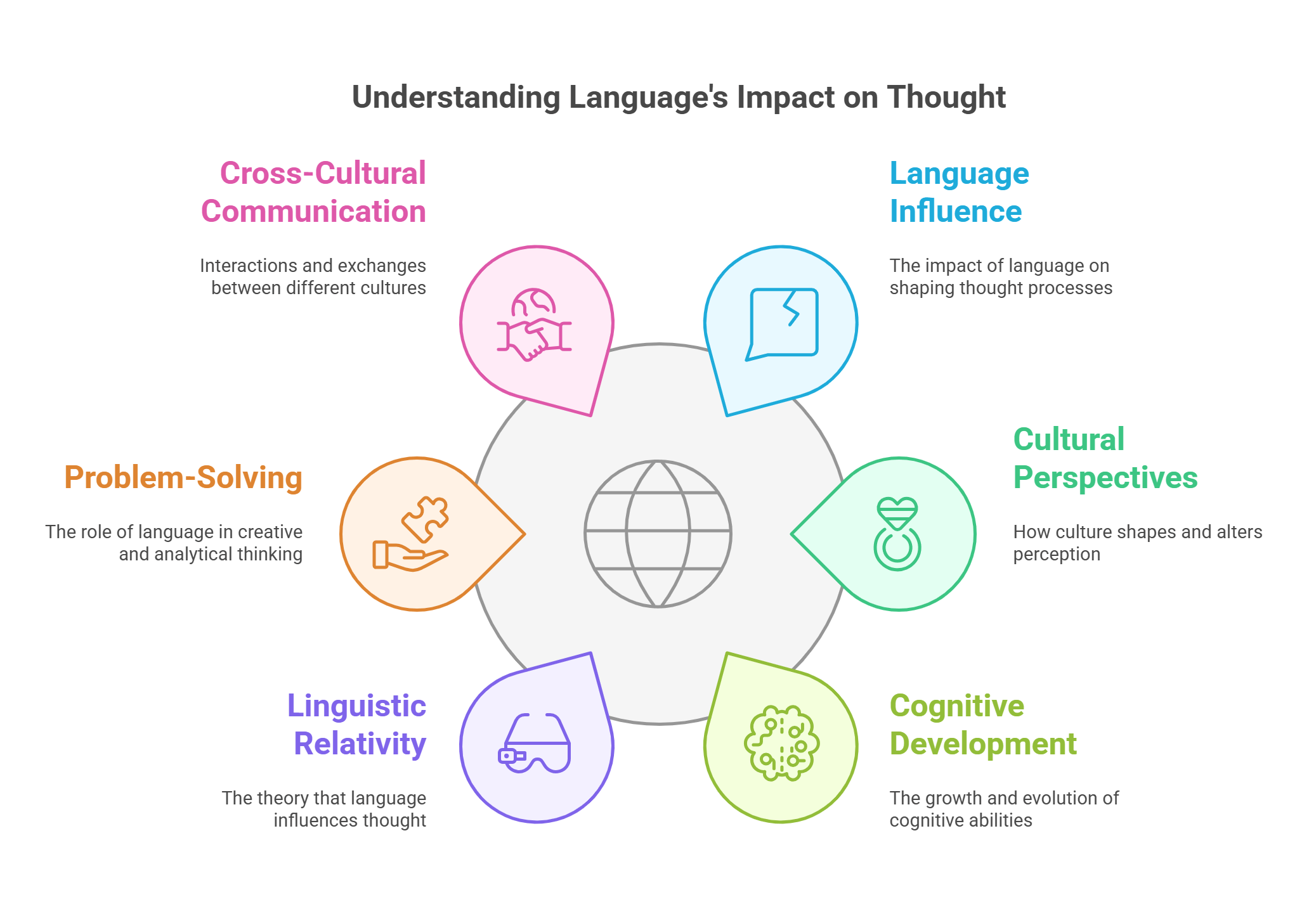
6. Pragmatics
Pragmatics studies how language is used in context. It focuses on implied meanings, tone, and nonverbal cues. This concept is vital for passages that analyze communication, social interactions, or cultural nuances.
- Focuses on language use in specific contexts.
- Explains implied meanings and indirect communication.
- Highlights the role of tone and body language.
- Relevant to interpreting humor, sarcasm, or politeness.
- Helps decode cultural communication differences.
Explained Simply: Pragmatics is like reading between the lines—understanding when “That’s great!” actually means “That’s terrible!”
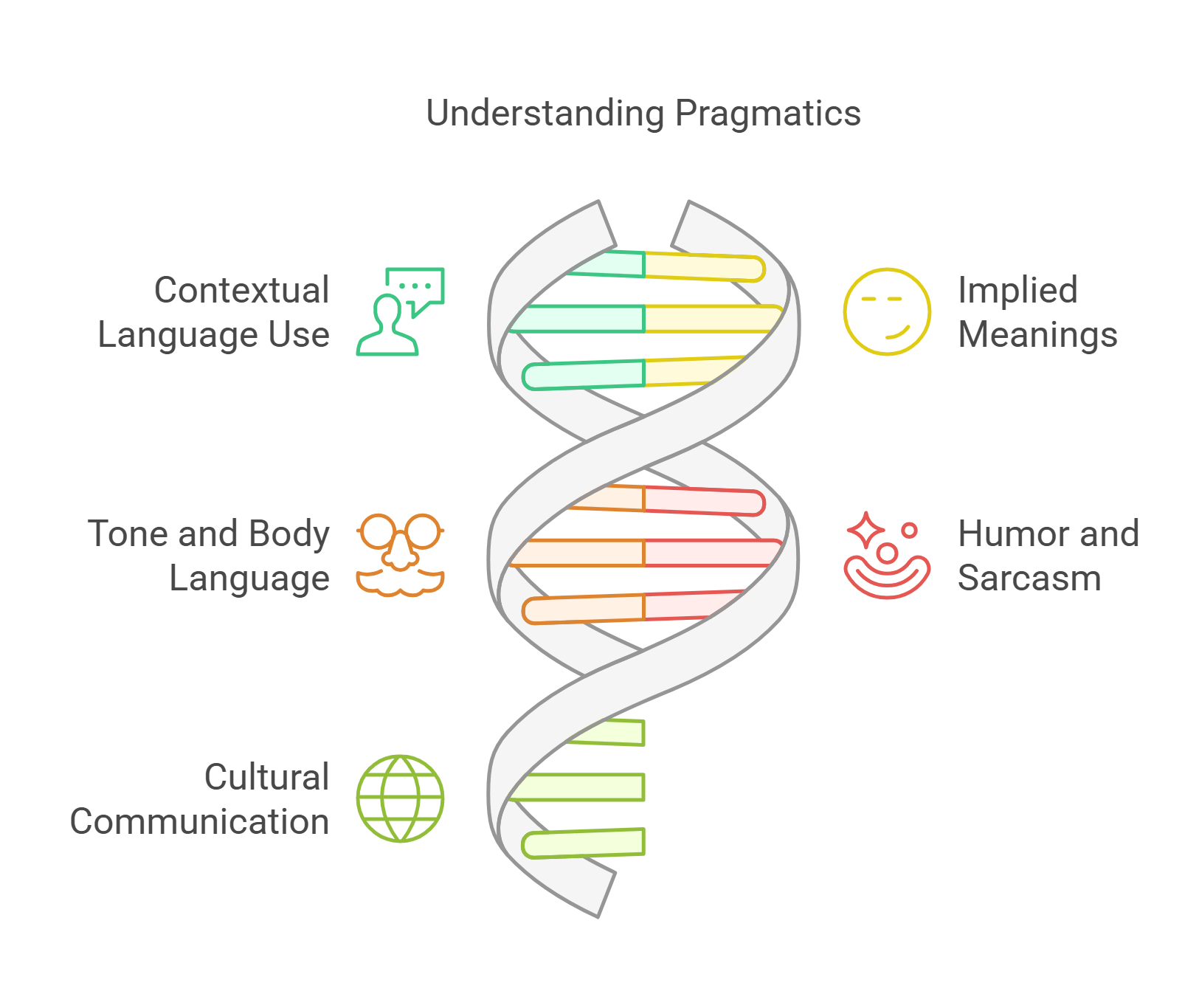
7. Morphology
Morphology is the study of the structure of words and how they are formed from smaller units called morphemes. For example, in the word “unhappiness,” “un-” (prefix), “happy” (root), and “-ness” (suffix) each carry meaning.
- Studies the smallest units of meaning in language (morphemes).
- Explains how words are formed and modified.
- Relevant for understanding complex vocabulary in passages.
- Helps analyze the evolution of word meanings over time.
- Connects word structure to grammatical rules.
Explained Simply: Morphology is like LEGO blocks for words. Each block (or morpheme) has its own meaning, and when you snap them together, you create a bigger word, like “builder” or “happiness.”
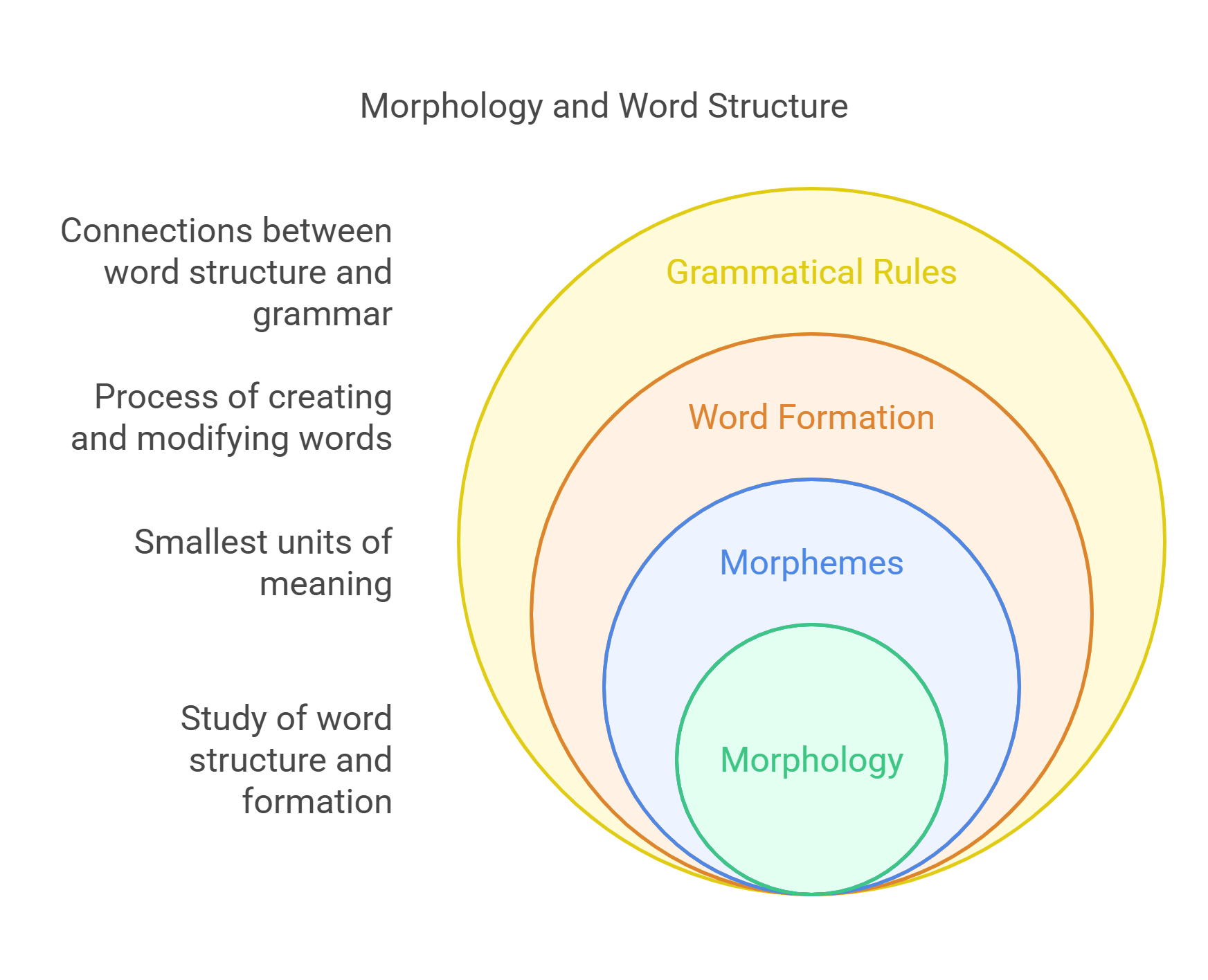
8. Historical Linguistics
Historical linguistics focuses on how languages evolve over time. It explores language families, word origins (etymology), and how languages influence one another.
- Studies the evolution and history of languages.
- Examines language families and their relationships.
- Explains how words and grammar change over time.
- Relevant to passages on culture and history.
- Discusses language borrowing and the impact of migration.
Explained Simply: Think about how old maps show different countries than today. Languages change over time, too! Historical linguistics studies how words and grammar were used long ago and how they became the way we speak now.
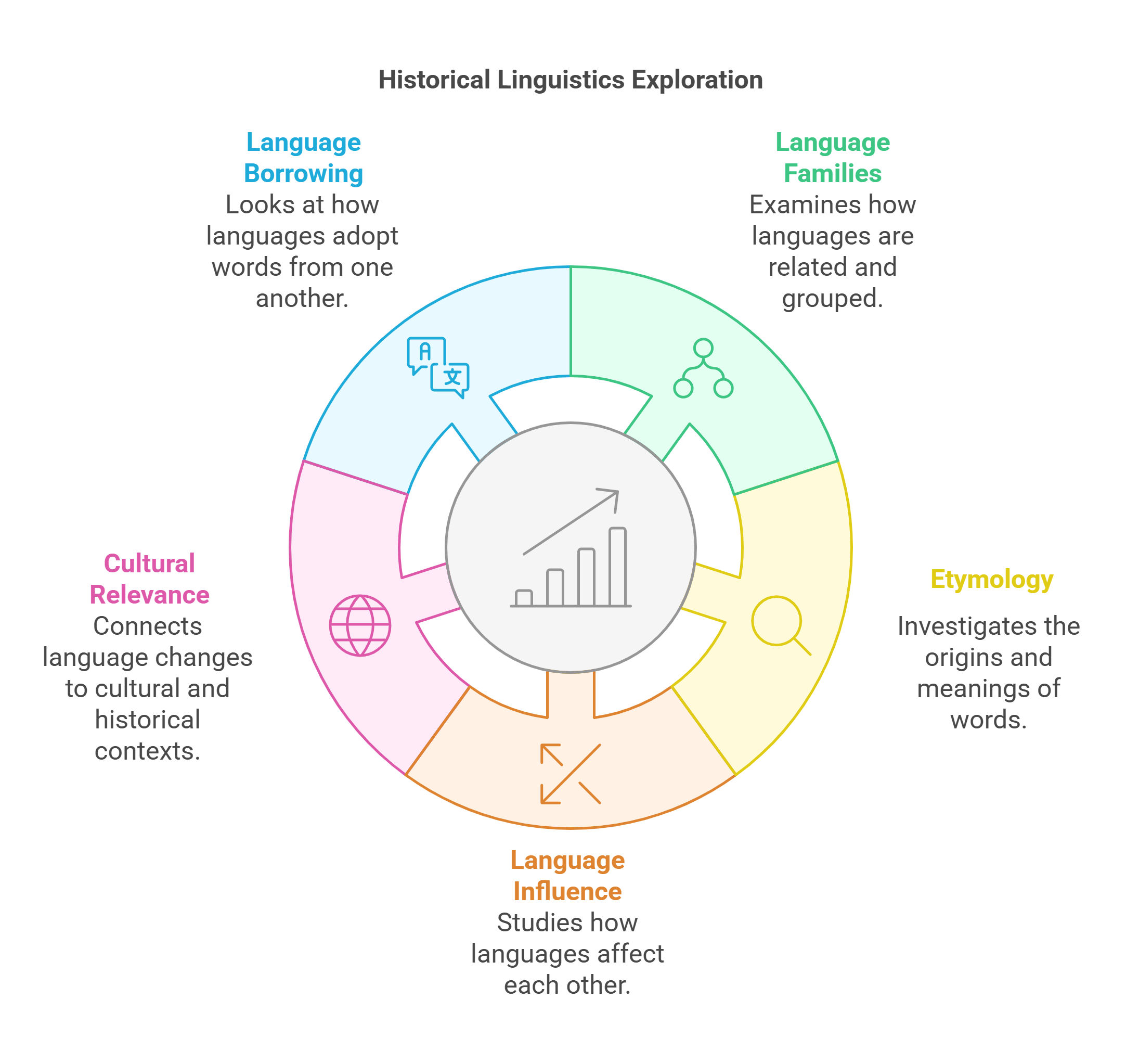
9. Applied Linguistics
Applied linguistics uses language theories to solve real-world problems, such as improving education, translation, or language policy. It’s especially relevant for passages discussing global communication or the role of language in technology.
- Applies linguistic theories to practical issues like teaching and translation.
- Focuses on language policy and planning in multicultural societies.
- Explores language technology, such as speech recognition.
- Relevant to discussions on bilingualism and education.
- Connects linguistics to social and technological advancements.
Explained Simply: Applied linguistics is like being a language detective, using what we know about words and grammar to make learning easier, help computers understand speech, or even create better translators like Google Translate!
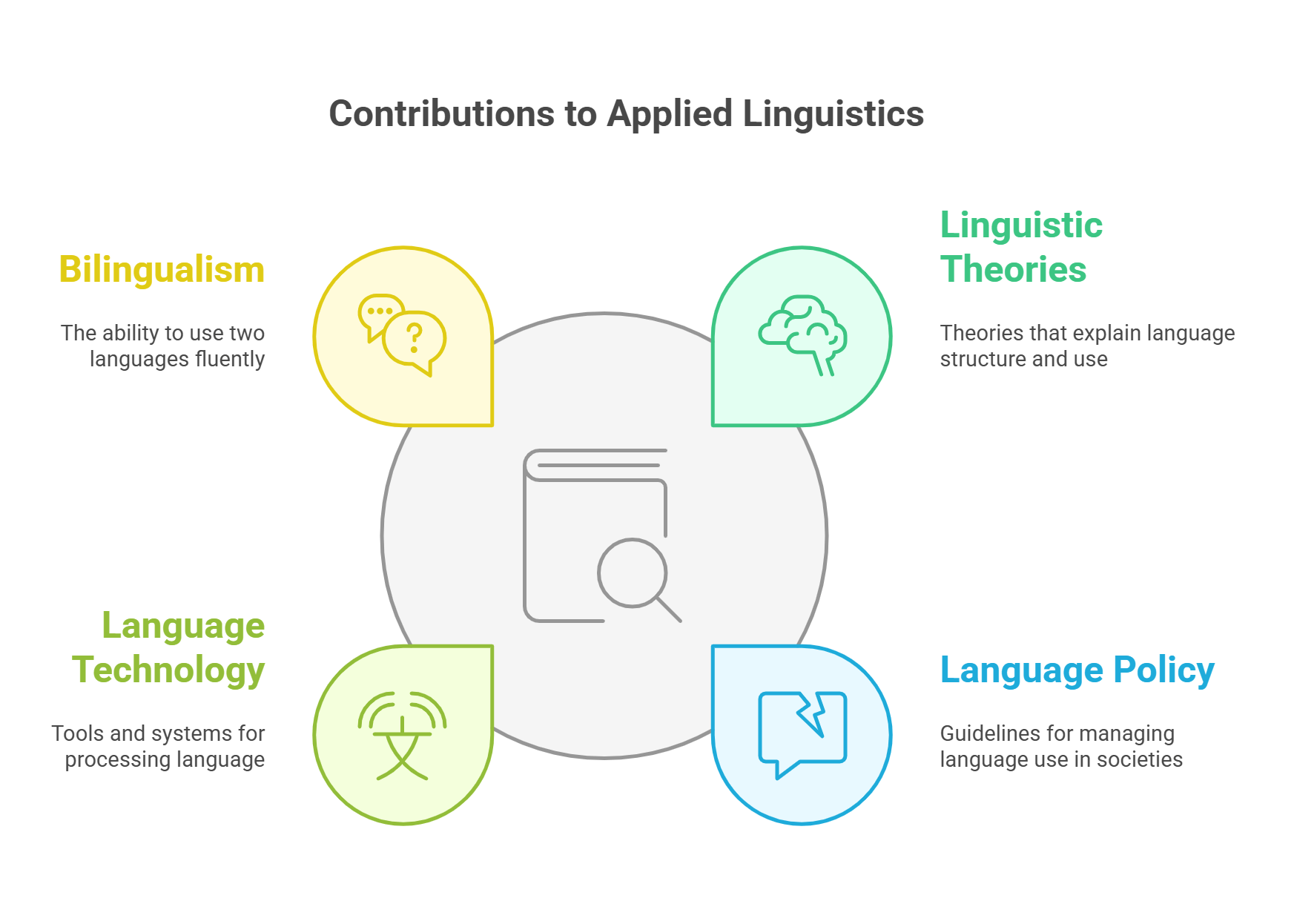
10. Psycholinguistics
Psycholinguistics examines how the brain processes language, from understanding words to constructing sentences. This field connects language to memory, perception, and cognition, making it essential for passages on psychology, neuroscience, or language development.
- Studies how the brain understands and produces language.
- Explores connections between language and memory.
- Relevant for passages on child development and cognition.
- Discusses language disorders and their impact on communication.
- Highlights the mental processes behind language learning.
Explained Simply: Psycholinguistics is like studying how your brain plays a word game—it figures out what people are saying, helps you find the right words to answer, and even learns new words, all without you even noticing!
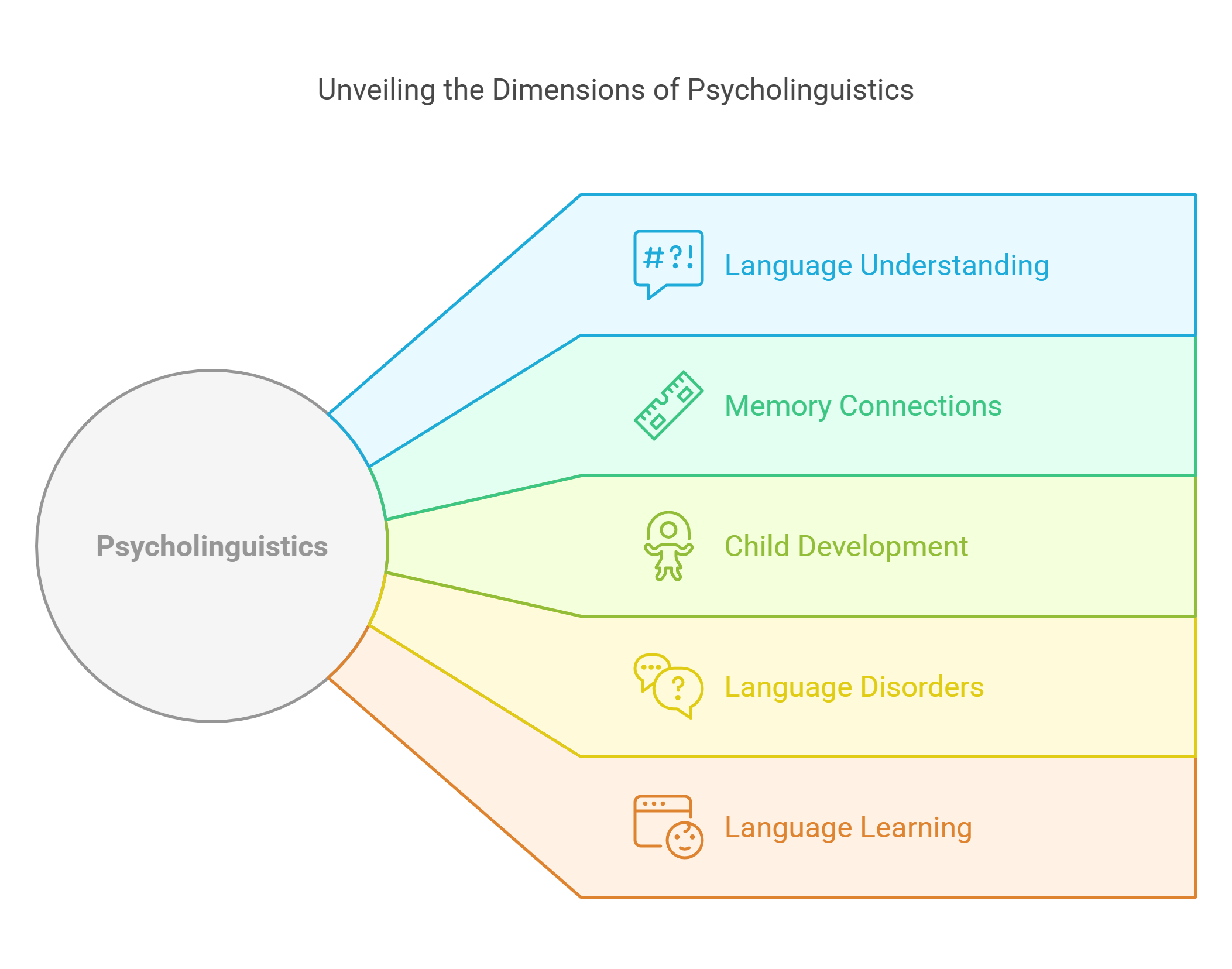
✨ Conclusion
Linguistics provides a rich toolkit for tackling reading comprehension passages. By understanding how language works—from its sounds and structures to its societal and cognitive aspects—you can decode complex texts more effectively. This knowledge not only aids in grasping the explicit content but also enhances the ability to infer meanings, analyze arguments, and appreciate the subtleties of communication.

